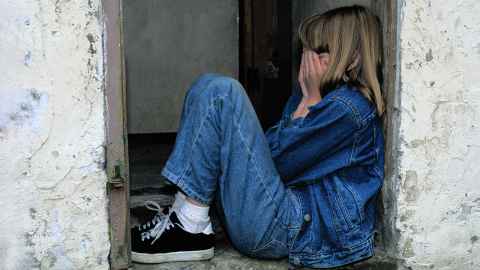Social equity vital for child protection reform
20 November 2019
Opinion: Social workers will never run short of clients until we address the underlying causes of child abuse, says Ian Hyslop.

This opinion piece is about the politics of dispossession, poverty and incarceration in neoliberal New Zealand. It is about how Māori, Pasifika and working-class families generally carry a disproportionate burden of social suffering in our society. (Look around you if you don’t believe me.) And about the need to dismantle the structures that perpetuate social inequality.
But mainly it is about child abuse.
At the risk of stating the obvious, child maltreatment is a social problem. Like all social problems, it has structural (social and economic) causes that go beyond individual fault and blame. Accordingly, the problem will not be fixed by simply locating and fixing child-abusing families or rescuing children when such families are (at some contested point) identified as being unfixable.
This is the problem with much of the early risk screening and intervention rhetoric – an over-simplified view of causation. It is naïve and misleading to think that you can reform a socio-economic system which reproduces unequal life chances and marginalises a significant section of the population by reforming one family at a time.
To borrow the language of the market, social workers are never going to run out of customers by taking this approach. It is a bit like expecting the American dream of individual social mobility to prevent the reproduction of chronic poverty in the US. This hasn’t happened yet, and I am not holding my breath.
So, what might a social understanding of child maltreatment tell us about possible solutions? This is where we leave the comfort of simplistic understandings and enter the realm of the complicated. Complicated? Yes. Quantum physics? No.
Of course, child abuse does occur in families, but not in families full of dangerous and diagnosable individuals who have fallen from the sky. We are more often looking at young families experiencing a wide range of stresses which are systemically generated – such as inadequate income, housing and education.
There are complex layers of non-linear causation: destructive intergenerational experiences in care and state institutions have left a painful legacy. Too many people’s life histories have been shaped by experiences of violence and alcohol abuse, and we cannot ignore the complex damage that systematic, sometimes violent, colonisation has caused for Māori since the 1850s.
Look around, travel between suburbs in our cities, look at the global context of power relations – smell the fermenting inequality.
We need integrated social services that offer meaningful help to families in need. We need practitioners who can work alongside whānau who are not always likely to be trusting. An adequately funded Whānau Ora programme may well make a difference. By Māori for Māori Iwi services, including the devolution of child protection services, is not impossible, although this is also complicated and an initiative as bold as this would take time to design and support.
The need to sometimes remove children from dangerous situations is not likely to go away any time soon, although the aspiration to never place tamariki outside of whānau or hapū is achievable if we are prepared to extensively resource this intent. I have heard the call for more authority for hapū and Iwi and less for the state: to stop throwing money at the Oranga Tamariki system. However, we need to be careful here – whānau responsibility without state funded support and resourcing for decisions is what we ended up with in the 1990s and the results were not encouraging.
As important as it is to strive to meet the undelivered promise of equality within difference which is enshrined in the Treaty of Waitangi, there is more to tino rangatiratanga than simply embracing a vision of social mobility within a capitalist model of development for Māori as well as Tau Iwi (for collective whānau as well as nuclear families).
Material social mobility for all is not the answer to the problems which capitalism produces: in fact, it is part of the smoke screen that sustains it as a system of exploitation and uneven accumulation. Look around, travel between suburbs in our cities, look at the global context of power relations – smell the fermenting inequality.
Other worlds are possible. So, let’s keep our eyes open as we think about child protection reform and the genesis of child maltreatment. Well-being for all will not be delivered until we have a socio-economic system that is genuinely concerned with the well-being of all, unlike the various shades of market capitalism that we currently subscribe to.
Child abuse is a complex social problem that is ingrained in the exploitative way in which we live and relate to one-another. This will not be rectified with simple remedies but there is much that can be done, if we are prepared to let go some of our best kept illusions.
A version of this opinion article was first published in Reimagining Social Work (RSW) Collective
Ian Hyslop is a Senior Lecturer in Counselling, Human Services and Social Work at the Faculty of Education and Social Work.
This article reflects the opinion of the author and not necessarily the views of the University of Auckland.
First published on Newsroom We must let go of illusions to address child abuse, 20 November 2019.
Media contact
Julianne Evans | Media Adviser
Mob: 027 5625868
Email: julianne.evans@auckland.ac.nz